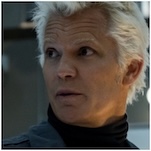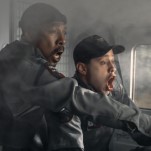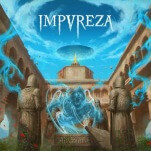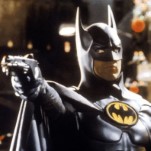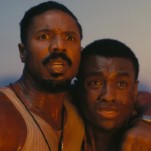25 Years of Vampires, Werewolves, Exorcisms, and More: The Best Screen Gems Movies
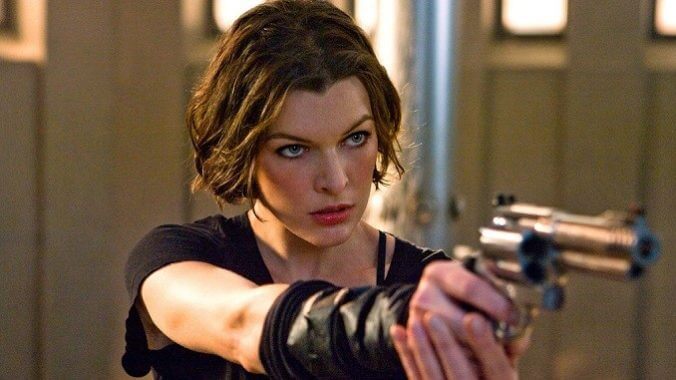
The Pope’s Exorcist closes with an exciting brazen implication that it may be the first of 200 movies in which an exorcist played by Russell Crowe will investigate pockets of hell-based activity here on Earth. (The characters all but say “one down, 199 to go.”) This might sound like empty, nutso bravado, and it probably is, but then again, The Pope’s Exorcist comes from Screen Gems, a Sony subsidiary that has produced seven Resident Evil movies and five Underworld movies, among other mashed-up monsters. Both of those series appear to be in a holding pattern; maybe it’s up to Russell Crowe to keep the Screen Gems brand alive.
Casual moviewatchers would be forgiven but not having much brand association with Screen Gems. It’s arguably the least immediately recognizable studio logo under the Sony umbrella, after the classic Columbia Pictures, the ’80s/’90s mainstay TriStar (it’s the one with the flying-horse logo), and arthouse institution Sony Pictures Classics. But genre fans should know Screen Gems well, even if they’ve come to dread it: This is the house that Paul W.S. Anderson built, a clearinghouse for action, horror, action-horror, action-fantasy, action-fantasy-horror, and other movies that weren’t getting much respect when the division’s current incarnation emerged nearly 25 years ago.
Though Screen Gems celebrates that quarter-century anniversary in December, its origins stretch back far further than 1998 . It was over a century ago that the company began as an animation studio founded by Margaret J. Winkler, who worked with Walt Disney before he started his own outfit. Later, Columbia Pictures distributed cartoons from Winkler Pictures, then purchased a stake in the company, before finally acquiring it outright in 1939. Slightly over a decade later, Screen Gems became Columbia’s entry into television production, where it flourished for 25 years before the brand was rechristened Columbia Pictures Television. A series of very ’80s mergers and acquisitions, including a purchase by the Coca-Cola Corporation and a sale to then-separate Tristar, which brought Columbia and the Screen Gems name to their current home: As divisions of the Sony corporation. Screen Gems was later resurrected as a genre arm for Sony, making movies typically bigger in scale than Sony Classics but not as big-ticket as Columbia or TriStar.
In other words, Screen Gems makes middle movies – exactly the kind of not-quite-low-budget fodder that so many studios have gleefully abandoned in the pursuit of tentpoles. Indeed, while many Screen Gems movies involve vampires, werewolves, exorcisms, and killer angels, their 25 years’ worth of relatively quiet middle-movie production also dabbles in other areas bigger studios have traditionally overlooked or disrespected when it was expedient to do so: Thrillers driven by Black talent, like Takers or The Perfect Guy; films by women directors, like Jane Campion’s maligned-then-reclaimed In the Cut; youth-culture pictures like Stomp the Yard or Easy A; romantic comedies like About Last Night or Friends with Benefits; sorta-musicals like Burlesque and Country Strong. And, yes, plenty of low-rent remakes of classics like Carrie, Straw Dogs and The Stepfather.
Not all of these movies are good. Some are pretty awful. But Screen Gems has carved out an identity for itself – there is certainly an easily recognizable “Screen Gems movie” vibe and The Pope’s Exorcist very much has it – while also throwing some genre curveballs. Its first film was the John Sayles thriller Limbo; its second was the starry terrorism potboiler Arlington Road. Talented directors have made pit stops here, other figures have made Screen Gems a default home; Milla Jovovich would have a career either way, but at Screen Gems, she’s a star. Now even an Oscar winner and household name like Russell Crowe is willing to cheerfully motor through a goofy Screen Gems exorcism movie on a scooter, having so much fun that he willingly implies that there could be nearly 200 more adventures to come. The Pope’s Exorcist isn’t one of the studio’s very best movies, but its flashes of craft amidst silliness and mercenary franchise-baiting are representative of the Screen Gems spirit.
In celebration of that spirit, and the studio’s upcoming birthday, here are the 15 best movies from throughout its 25-year history, judged on both individual merit and their place within the Screen Gems identity:
15. Underworld: Evolution (2006)
The first Underworld movie, in which vampires and werewolves have gun battles in an unnamed metropolis, was an aesthetically influential hit for Screen Gems, affecting a shiny-pleather imitation of Matrix sleekness and obviously inspiring the middling likes of Priest and Legion. (How was there never a Screen Gems movie starring Kate Beckinsale and Paul Bettany?) The truly Underworldly, however, will appreciate the more overt trashiness of the first sequel, which has more violence and sex, and (somewhat) fewer scenes of vampiric aristocrats walking through ornate doorways.
14. Armored (2009)
Pulpier and more savory than some of Screen Gems’ many early-‘90s-style domestic thrillers with Black leads, Armored feels more akin to sister company Columbia’s 1940s noirs, with Columbus Short as a good man ensnared in a heist plot with his armored-car-security colleagues. Much of the movie takes place in a stationary vehicle, and director Nimród Antal does capable work milking that scenario, with the help of a ringer-heavy cast: Laurence Fishburne, Jean Reno, and Matt Dillon (who also co-starred in this film’s unofficial companion piece, the entertaining Takers).
13. In the Cut (2003)
Jane Campion’s serial-killer thriller is one of those movies that was so unfairly dismissed, and so rapturously reclaimed by some corners of film culture, that it’s easy for it to become weirdly overrated. The press at the time focused on the fact that America’s designated sweetheart Meg Ryan got dark, naked, and naked in the dark for steamy encounters with then-rising star Mark Ruffalo. That aspect does give the movie a subversive charge, but with two decades of hindsight it’s also easier to see In the Cut as an impressionistic portrait of early-2000s New York City, shot in smeary shallow focus with greenish tints and noirish shadows. It’s a Screen Gems outlier, striking an unintentional contrast with the near-simultaneous release of Underworld, and one of the best of the studio’s occasional (and, yes, sometimes seemingly accidental) auteur projects.
12. Searching (2018)
Horror fans will swear by one or both Unfriended movies, but Searching remains the Screen Life thriller – a found-footage cousin in which all of the action unfolds via computer screens – that comes closest to Hitchcockian glory. John Cho gets a too-rare leading-man turn as a dad investigating the disappearance of his teenage daughter, and director Aneesh Chaganty gives the movie the oddly transfixing urgency of an internet rabbit hole.
11. Hostel (2006)
You have to hand it to Eli Roth. (Or, do you? But let’s just let him have this one.) He really goes for it with Hostel, a gross-out horror show that either satirizes Ugly American fears of traveling abroad, or indulges them – or maybe both? – with a festival of bodily torture. Hostel separates itself from the contemporaneous Saw movies with an ascent into actual suspense in its final stretch, as well as that nasty sense of humor that he hasn’t really deployed as well since Hostel Part II upped the ante further in 2007. If Hostel still seems like more of a Lionsgate movie, well, in the U.S. it was; Screen Gems handled international distribution, making this one seem even more like a flirtation with a different corner of horror. I love the Screen Gems action-fantasy-horror nexus, but there’s something satisfying about their occasional willingness to indulge something that feels genuinely disreputable.
10. Vacancy (2007)
Underworld badass Kate Beckinsale goes Scream Queen for this lean horror exercise from Armored director Nimród Antal. Beckinsale and Luke Wilson play a bickering married couple who must fight for their lives when they’re trapped at a sinister motel. It was marketed as sort of a grody Saw-adjacent nightmare, and while it certainly has a low-down B-movie grit, Vacancy is also logistically impressive, turning a mundane location into an unexpectedly hellish gauntlet.
-

-

-

-

-

-

-

-

-

-

-

-

-

-

-

-

-

-

-

-

-

-

-

-

-

-

-

-

-

-

-

-

-

-

-

-

-

-

-

-









